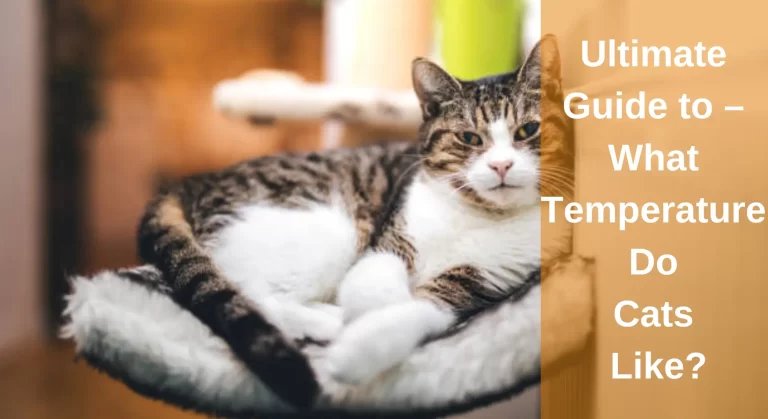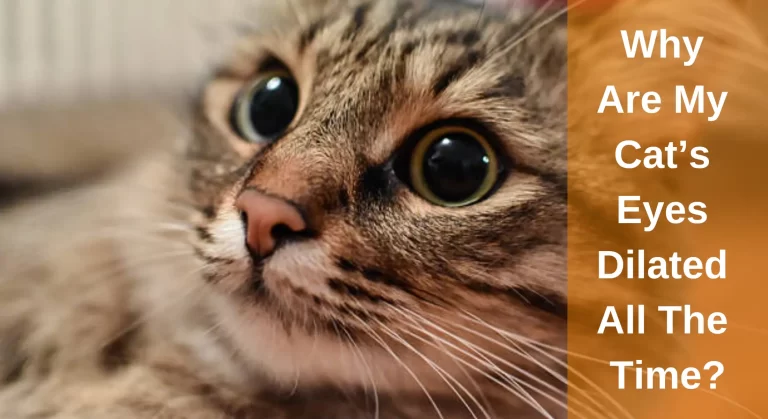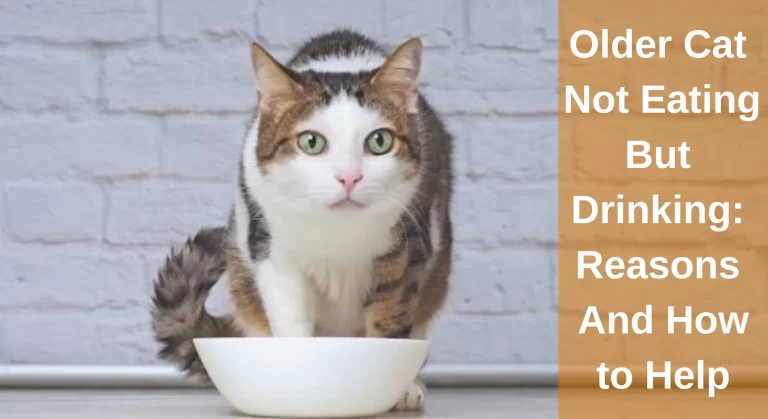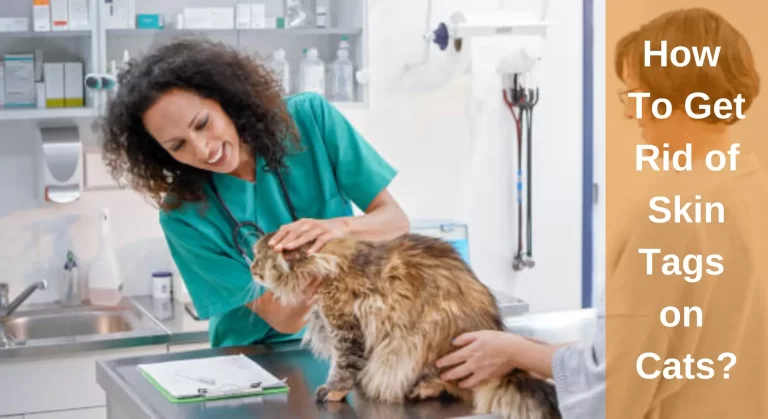The Ultimate Guide to How to Get Rid of Cat Pee Smell
Although cats bring us so much joy, their odors and stains can be annoying for cat owners. By creating your own pet stain remover from affordable ingredients, you can keep your home tidy. The odd stains and odors left behind by pee, hairballs, and vomit, to mention a few, may be removed with homemade cleaners. Always spot-test a small area to be sure there won’t be any damage or discoloration before cleaning.
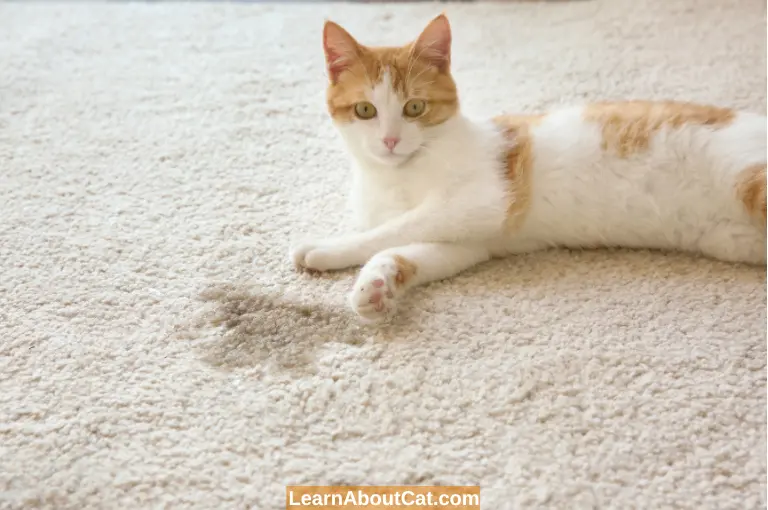
The Vomit and Hairball Cleaning Kit
This includes three used rags, vinegar, baking soda, and water.
Directions:
- A moist towel should be used to wipe up vomit or a hairball from the carpet or hard floor.
- Vomit stains on the carpet may be cleaned by sprinkling baking soda over the spot and letting it soak for an hour. This will be useful if the carpet is where the vomit was.
- In a bowl, combine vinegar and warm water.
- The spray container should be filled with the mixture.
- Vinegar, baking soda, hydrogen peroxide, dish soap, enzyme cleaner, rags, and an old towel are the ingredients for the cat urine remover.
- The best way to dispose of cat waste is to absorb up as much of it as you can using an old towel.
- Apply baking soda to the afflicted area and wait for ten minutes.
- Vinegar should be poured over baking soda, let boil for a few seconds, and then be blotted with a clean towel.
- Several teaspoons of hydrogen peroxide and a few drops of dish soap should be combined. To the stain, apply the mixture.
- After massaging the hydrogen peroxide/dish soap mixture into the carpet fibres, quickly wash it off to prevent fading of the carpet’s color. It might be advisable to spray the area with this combination before wiping it off on hard floors.
- By blowing over the area, a fan may swiftly dry it. The next step is VERY important because even if the area appears to be clean and fresh, cat poop will recrystallize.
- Apply an enzyme cleansing to the afflicted area after around 24 hours, then let it completely air dry. To keep your family from walking in the area, cover it with a laundry basket or aluminum foil.
Also, Check Out: Why Does My Cat’s Poop Smell So Bad?
How Cat Stains and Odours be Removed?
Once you’re done cleaning, use a black light to look at a troublesome region. It will be clear if there is still cat pee around. Even though it sometimes seems to have disappeared, pee can crystallize and stay in carpet fibers.
Black light reveals the stain’s size, which is invisible to the human eye or nose. You should arrange to meet with your veterinarian for a consultation to go through various therapeutic food alternatives.
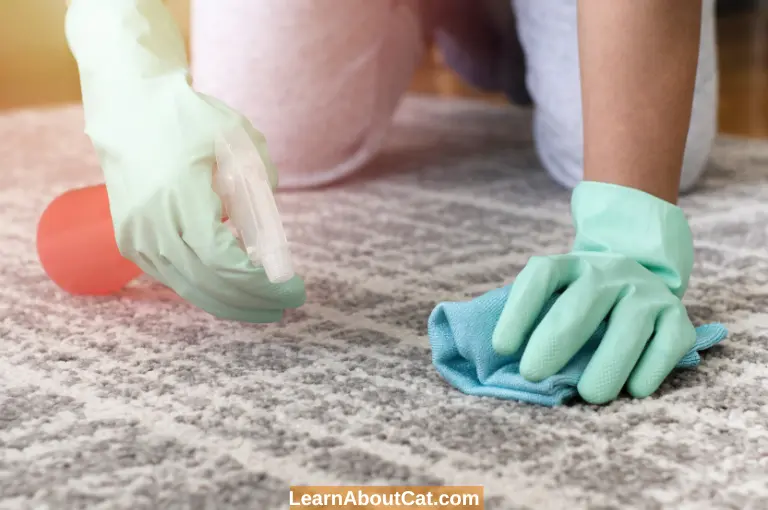
1. Cat Urine Odour Solutions
It’s important to absorb and expel as much urine as you can. Remove as much urine as you can from the fabric it is on, whether it is in your carpet or the material of your sofa, to get the greatest results. To avoid unpleasant odors and stains that are difficult to remove, it is imperative to dispose of the urine as soon as you can.
Here are a few low-cost things that might be useful for your cleaning process: (Caution: Removing cat poop with ammonia-based cleaning products can only make the problem worse.)
Vinegar and Water
It has been found that vinegar works well to get rid of the smell of cat poop. Vinegar’s strong acidity helps to balance and neutralize the microorganisms that grow in dried urine stains and give off that unpleasant odor.
White vinegar or apple cider vinegar may be mixed with water and sprayed onto any surface or floor (often in a 1:1 ratio). Wipe the solution with a paper towel. Do this repeatedly until the area is largely dry.
Baking Soda
Baking soda has excellent deodorizing properties that might get rid of the smell of urine. Sodium bicarbonate, a component of baking soda, is a highly powerful odour absorber.
Make sure the area is dry before you sprinkle your cat’s poop on the carpet or furnishings. After letting the baking soda sit for 15 to 30 minutes, thoroughly vacuum the area.
Hydrogen-Peroxide
To further get rid of the smell, use hydrogen peroxide shortly after using the vinegar and water mixture. Hydrogen peroxide, which also works on carpets, couches, and even clothing, is the greatest remedy for hardwood floors with cat urine odors.
The ammonia smell that results from cat poop can be eliminated thanks to this. Pouring hydrogen peroxide directly on the area where the stench is coming from and letting it sit for at least five minutes will work well.
3. Clean up the Litter box
Cats may respond by using your carpet in its place because utilising a dirty restroom is not ideal for them. More frequent litter box cleaning will assist with this problem.
Particularly if they are kittens or are being exposed to new environments, cats occasionally need to be reminded of where to go. Showing your cat where the litter is should be done with patience and aggression. If they do utilize their litter, it’s vital to compliment them.
4. Retraining
Particularly if they are kittens or are being exposed to new environments, cats occasionally need to be reminded of where to go. Showing your cat where the litter is should be done with patience and aggression. If they do utilize their litter, it’s vital to compliment them.
5. Add more litter boxes
If you have a lot of cats, it’s a good idea to have more than one litter box so they have many locations to discharge themselves.
After their Litter box, Set Cat Training Urine Pads there
Lay down training pads to protect the carpet or floor if your cat ever urinates even marginally outside the front or back of the litter box. The garbage area will surely smell better if you do this. Your house should smell wonderful soon!
Just keep in mind that hiring a professional carpet cleaner is always a better option for permanently eliminating cat pee odors.
Interesting Reading: Can Cat Wear Diapers? Cat Diapers 101
How Can Cat Pee Odour be Eliminated?
The first three causes listed below explain why your cat could be going to the bathroom elsewhere:
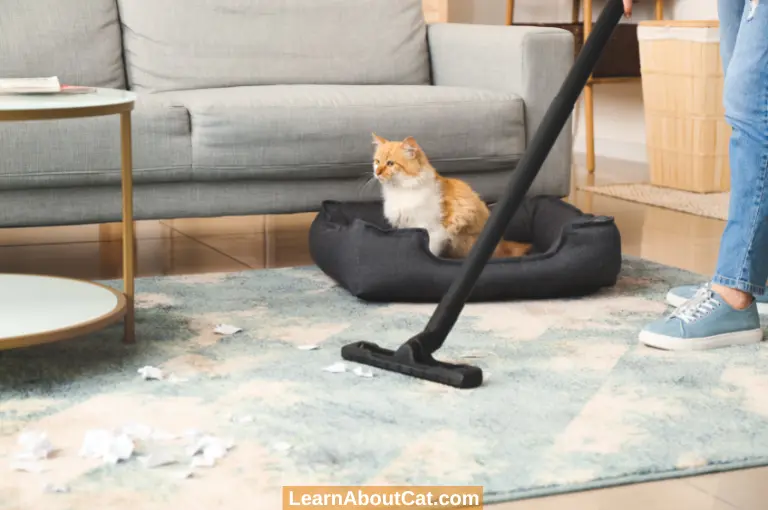
- Cats commonly use the litter box as a kind of communication with you to express how they feel about their litter box, changes to the house, or health issues. Maybe there’s another explanation? Unneutered male cats mark their territory with urine spray, while unspayed females spray to let male cats know they are in heat. The ability to stop the odor of cat poop before it starts is another key benefit of spaying or neutering your feline friends.
If you remove the cat pee as soon as you can, your cat will be less inclined to urinate there once more. The smell of cat pee must be removed, not only covered up with smells or perfumes.
- The ammonia smell that some cat poop may have is unpleasant to both you and your pet. If your litter box smells like urine, your cat may decide to use an inappropriate spot instead of the dirty one. For cat pee absorption that lasts seven days and a lightweight litter, choose ARM & HAMMERTM AbsorbX Lightweight Cat Litter. The smell of cat poop in your home is reduced by using the right litter and keeping your cat’s litter box clean.
- Use the extra cleaning agent that comes with the ARM & HAMMER Plus OxiClean 3-in-1 Power Paks, which also feature ARM & HAMMER Baking Soda and OxiClean Stain Fighters. You can also use a fragrance booster, like ARM & HAMMERTM Clean ScentsationsTM In-Wash Scent Booster with Odor Blasters, to further reduce urine odor.
How Can Cat Pee Smells be Eliminated from Non-Carpeted Surfaces?
The following instructions will show you how to get a thorough cleaning that gets rid of the urine smell if your cat is urinating on non-carpeted surfaces like ceramic tile, grout, vinyl plank, or linoleum.
For a do-it-yourself fix: Ammonia or vinegar cannot be included in any DIY or commercial cleaning solution for non-carpeted surfaces. Use caution while using any products to remove cat pee that including chlorine bleach. Cat poop contains ammonia, which when combined with bleach produces potentially dangerous smells. OxiCleanTM Versatile Stain Remover eliminates stains and helps neutralize odours by harnessing the power of oxygen.
- Ceramic tile, grout, vinyl plank, and linoleum may all be cleaned using OxiCleanTM VSR, which is typically thought of as a laundry booster. It is devoid of chlorine and bleach and may be used to get rid of cat poop. These tips will help you remove cat waste from solid flooring and get rid of the stench.
- A gallon bucket should be filled with hot water. Using the included scoop, add one scoop of OxiCleanTM to Line 1 and then add the scoop to the bucket. With a long-handled spoon, stir the mixture until the OxiCleanTM dissolves. Apply the solution to the floor, and let it sit there for one to five minutes.
Check Out: Can Cats Find Their Litter Box If You Move It?
How to Get Cat Urine Smell Out of Clothes
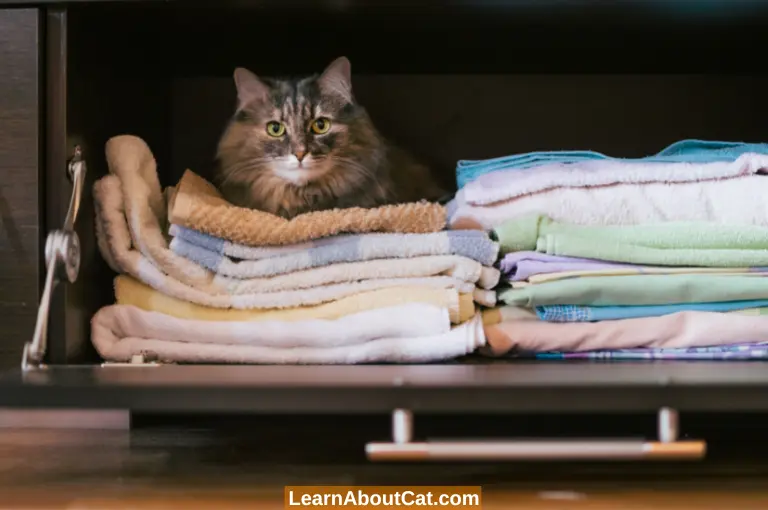
- Never use bleach on garments or linens; it can generate dangerous odours when combined with ammonia and cat excrement.
- Use cold water to rinse the area.
- Give the stain a cold water rinse in a sink first if your clothing and bed linens may be machine laundered.
- Use cider vinegar or baking soda and detergent to clean.
- To the washing machine, add the laundry, detergent, and either a cup of baking soda OR a quarter cup of cider vinegar.
- If the odor persists, add an enzyme cleanser.
- If the smell of urine is still there after the cycle is finished, follow the package instructions and add an enzyme cleaner to the load.
- Air-dry items after washing.
- Never use a dryer to dry linens; it might retain smells that haven’t completely subsided.
- Rewash it.
- You might need to repeat the washing a single or several times until the smell is completely gone.
Eliminating Cat Poop-Related Carpet Odour
Because the stench of cat urine can seep all the way through the carpet fibers to the padding, it could be challenging to remove it from carpets. In order to prevent repeat visits, it is also essential to carefully clean and deodorize the area because cats have a good sense of smell.
Do-it-yourself repair options: After carefully cleaning the area with club soda, let it air dry. After that, including ARM & HAMMERTM Baking Soda. Vacuum the area after letting it stand so that the baking soda may take up any odors that remain.
How Can Cat Poop be Removed from a Mattress Without Leaving a Stench?
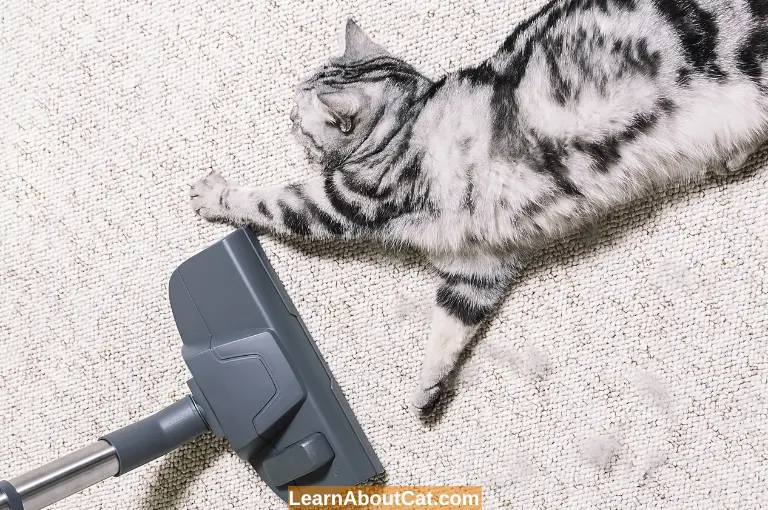
The method for making mattresses and pillows is quite similar.
- Put the mattress’s affected area in a sink of water. As much of the cat’s urine as you can be absorbed with a towel.
- To clean the area, use an enzyme cleanser.
- Before soaking the mattress, slowly pour the enzyme cleaning over and around the harmed area.
- Let it rest before drying it with clothes.
- After letting the enzymatic cleanser sit for 15 minutes, blot the area. Make the bed, then cover the mattress with several layers of fresh towels.
- Let the mattress air dry out.
- Till the mattress is totally dry, the towels should be changed daily. Cover the bed with a sizable plastic sheet when not in use to prevent mishaps while the mattress dries.
- You might also get a waterproof mattress cover to cover it to protect it from future incidents.
- If necessary, reapply. Numerous treatments can be required in order to completely eradicate cat pee from mattresses.
Check Out: Why Is My Cat Keeps Pooping On The Carpet or Floor?
How Do Get Cushions Fresh Again after Cat Urine Odour?
Here are some methods for eliminating the smell of cat pee from a cushion.
- To repair the cushion’s damaged area, use water. As much of the cat’s urine as you can be absorbed with a towel.
- To completely clean the area, apply an enzyme cleanser.
- Pour the enzyme cleanser carefully over and around the cushion’s damaged area to saturate it.
- Let it rest before drying it with clothes.
- Squeeze out as much more enzyme cleansing as you can after letting it remain for 15 minutes before blotting with towels.
- Air-dry the cushion.
- The cushion should be allowed to dry outside for as long as possible, if at all possible. Because cushions take days to dry, you should put another layer of aluminium foil on top of the cushion to stop your cat from urinating on it again. Before replacing the cushion, lay down aluminium foil.
Interesting Reading: How to Get Cat Pee Out of a Couch?
What Causes a Cat to Urinate Beyond the Litter box?
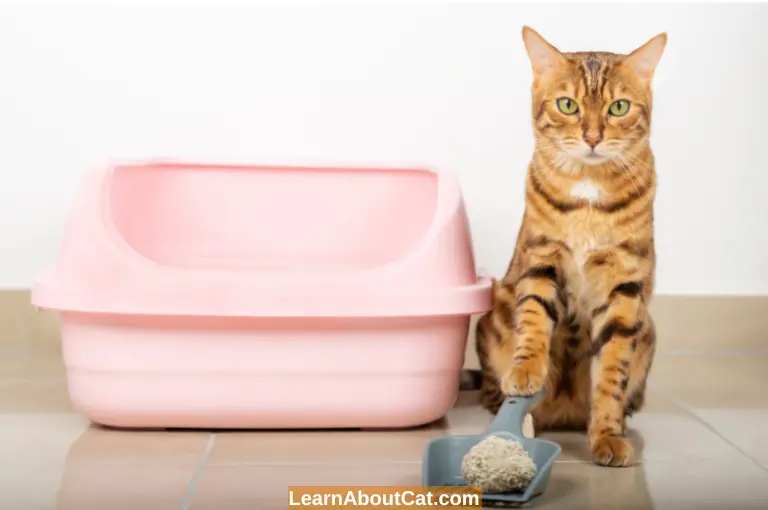
It is rare for cats to pee anyplace other than their litter box. There may be a number of causes, but there are also solutions. Before you start becoming worried, see whether any of the following circumstances apply to your cat’s accidents outside the litter box.
Many people who own cats have the misconception that cats pee in unattractive places when they are annoyed or mad at you. This can’t possibly be real! In contrast to humans, cats do not use Machiavellian methods to plan their retaliation.
They usually bite you immediately if you annoy them. The majority of reasons why cats urinate outside of their litter boxes include litter and/or litter box issues:
1. Quantity of Litter
Make sure there is adequate litter for your cat to comfortably use. Even a small amount of feces will quickly fill up the litter box if there isn’t much of it. Your cat won’t be able to conceal her waste very well, so she’ll reveal it.
This will smell awful and could possibly be harmful. Not the area it covers, but the depth of the trash is what counts. Your cat will have enough litter to cover her excrement if the litter is deep enough.
2. Location of the Litter box
If the litter box is difficult to get into, your cat won’t want to use it. Make sure her litter box has a wide, clear entrance that isn’t blocked by clutter or other objects like furniture. Make sure the door is constantly open if the litter box is in a room with a door. Make using and getting to your cat’s litter box easy and enjoyable.
3. Stress and Anxiety
Changes in a cat’s environment and its routine can cause worry and anxiety in them. These changes include things like moving into a new house and temporarily or permanently introducing your cat to another animal.
Cats mark their territory with urine. If they feel threatened in their ownership of their territory, they may pee someplace other than their litter box.
Your cat will need to mark her territory to indicate that she is the dominant animal in the house when a new animal is introduced. Your cat will need some time to get used to the new place and make it her own by leaving her mark, just like you do when you move.
4. Changes in the Litter
The quality of the trash you choose is really important. It will affect how much and how strongly there will be an odor. First and foremost, the litter you use should be allergy-free. Allergies are frequently brought on by perfume in the litter. The litter box should be sufficient to mask the smell of excrement, so you shouldn’t require perfume.
Additionally, the litter you select should be capable of absorbing the maximum amount of poop. It shouldn’t be excessively damp or filthy after your cat uses it.
The pee should become a brick so you can just scoop it up.
5. The Condition of the Litter box
They don’t want to be forced to use a filthy, frequently overflowing litter box. If you don’t regularly clean the litter box, your cat can get quite uncomfortable and stop using it. Make sure to completely replace her litter once a week and clean up her waste every day.
6. Medical Problems
A number of medical issues, including arthritis and urinary tract infections, might make your cat pee beyond the litter box.
If your cat suffers from a medical problem like a urinary tract infection that prevents her from retaining her pee, she may need to urinate straight immediately. Or your cat might not be able to use her litter box comfortably and choose a more comfortable location to pee if she has illnesses that make moving or walking difficult, such as arthritis.
7. Sharing a Litter box
If you have several cats in your house, it is typically a good idea to designate distinct litter boxes for each cat. If your home is too tiny, you could be forced to share a litter box with two or more cats. The shared litter box needs to be kept in particular clean first.
If several cats are using it, it will quickly become dirty. If a new cat enters your home and begins using the same litter box as your current cat, that may be an issue.
What Can You Do to Train Your Cat to Use the Litter Box?
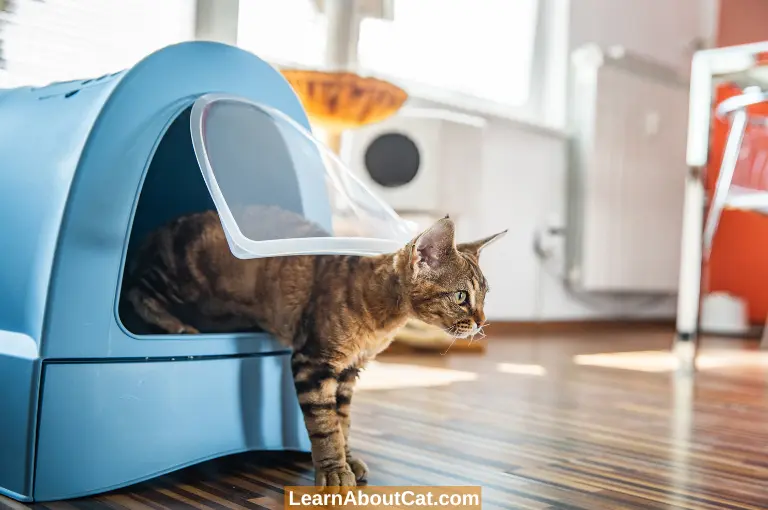
- Cats normally have little trouble getting used to using a litter box. They’ll obviously prefer a confined space with rubbish that will disguise their excrement. It’s possible that your newly acquired kitten or adult cat won’t be able to find her litter box on her own if the house is strange to her, so you may need to show her where it is.
- Take your new cat to the litter box as soon as she gets to your house so she can become accustomed to it and smell it. After meals, you could also place her in her litter box.
- She has already left her pee odor in the litter box, so it will likely be finalized once she uses it for the first time. She’ll start smelling herself and start using the litter box more regularly.
- Keep in mind that if she marks a different location with the smell of her pee, you must completely remove the smell to stop her from identifying and routinely use that spot as a toilet.
- Your cat might occasionally require some positive reinforcement with cat toys and treats at the start of the training. When she uses the litter box, you could give her a treat, but you shouldn’t get angry if she makes a mistake. This will just heighten anxiety and exacerbate the difficulty of training.
- You should focus on selecting a suitable litter box (and its litter) and putting it readily in addition to successfully introducing your cat to her litter box.
- The ideal litter box should be big enough for your cat and have adequate litter.
- It should not be too high or too narrow, and it should also be fairly easy to access.
- Additionally, you have to make an effort to learn whether your cat favors an open or covered litter box.
- Try both methods to see whether your cat responds in a certain way. If not, you will need to decide which you prefer on your own. Just keep in mind that while hooded litter boxes may appear more orderly and provide your cat with more solitude, they may also retain odors and make your cat uncomfortable when used.
- The location of the litter box will also affect how well your cat learns to use it.
Is My Cat’s Urination Normal?
It’s quite fair to be curious about your cat’s health, and one of the best methods to figure out whether or not you should be worried is to examine her feces. In addition to the aroma, keeping an eye on your cat’s poop may enable you to detect other early indicators of health problems. Some of these indicators include the viscosity, color, and volume of urine.
Let’s start by defining the characteristics of healthy cat poop:
- Although every cat has a different routine, cats typically urinate in the litter box twice daily. They don’t need to urinate as frequently as we do because they have kidneys that are much more effective and can almost completely absorb the water from their urine. Keep tabs on how often your cat urinates every day and take note if the frequency rises or falls.
- The physical qualities of your cat’s poop should be a clear, vivid yellow liquid.
- Any spotting, including blood, blood clots, mucus, or lumps in the pee, is uncommon. There must be no excessive viscosity or cloudiness.
The Bottom Line on How to Get Rid of Cat Pee Smell
Discovering the root cause of your cat’s blunders is the most important task at hand. You should first rule out any significant medical issues. The next thing to do is to look for any issues with her litter or litter box that would be forcing her to utilize other locations as a potty. It need not be difficult to deal with cat poop odor. Simply put, determining what works best for you takes time.
To get rid of pee stains and get rid of litter box odors, you have a variety of alternatives, including both do-it-yourself remedies and specialized products you may purchase.
I hope you can discover the one that works best for you and your kitty among these.
Who is Isabella?
My name is Isabella, and I am a dedicated and knowledgeable cat enthusiast. With years of experience caring for cats and a deep love for felines, I made a mission to help other cat lovers navigate the challenges of cat ownership.

